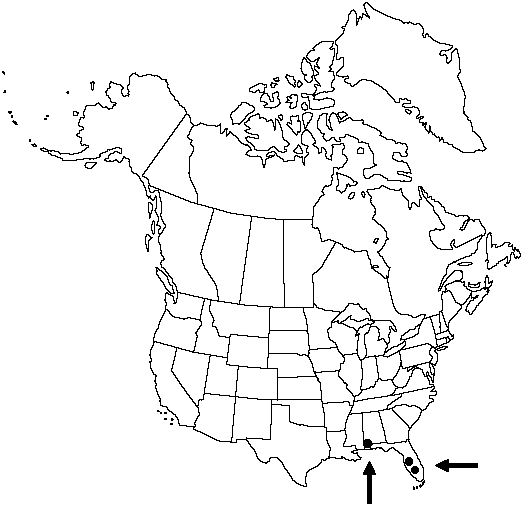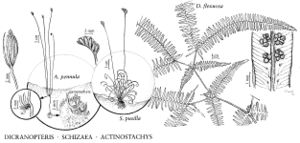Difference between revisions of "Dicranopteris flexuosa"
Bull. Torrey Bot. Club 34: 254. 1907.
FNA>Volume Importer |
FNA>Volume Importer |
||
| Line 55: | Line 55: | ||
|publication year=1907 | |publication year=1907 | ||
|special status= | |special status= | ||
| − | |source xml=https://jpend@bitbucket.org/aafc-mbb/fna-data-curation.git/src/ | + | |source xml=https://jpend@bitbucket.org/aafc-mbb/fna-data-curation.git/src/f50eec43f223ca0e34566be0b046453a0960e173/coarse_grained_fna_xml/V2/V2_634.xml |
|genus=Dicranopteris | |genus=Dicranopteris | ||
|species=Dicranopteris flexuosa | |species=Dicranopteris flexuosa | ||
Revision as of 20:51, 16 December 2019
Stems 2–5 mm diam.; hairs reddish brown to chestnut brown, falling off early. Leaves to more than 1 m, axes straw-colored, glabrous except at petiole base. Penultimate segments sessile, divergent to ascending, in ± equal pairs, deeply pinnatisect, lanceolate to oblanceolate, to 30 × 6 cm wide, leathery, glabrous, whitish waxy or glaucous abaxially. Ultimate segments linear, slightly dilated proximally, margins strongly revolute, apex retuse. Sori nearer midrib than margin; sporangia usually 6–12 per sorus.
Habitat: Terrestrial and climbing on open slopes in drainage ditches, widespread, tropical
Elevation: 0 m
Distribution

Ala., Fla., Mexico, Central America, South America.
Discussion
Plants in Florida tend to be depauperate when compared to tropical populations; individual leaves are smaller and plants seldom form dense thickets. Dicranopteris flexuosa appears to be a natural element in the flora (J. R. Burkhalter 1985; R. Moyroud and C. E. Nauman 1989). Plants may not persist very long, however, as evidenced by Alabama and some Florida populations that are no longer extant.
Selected References
None.
